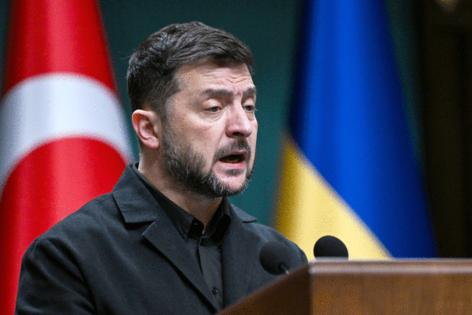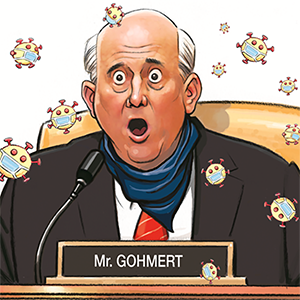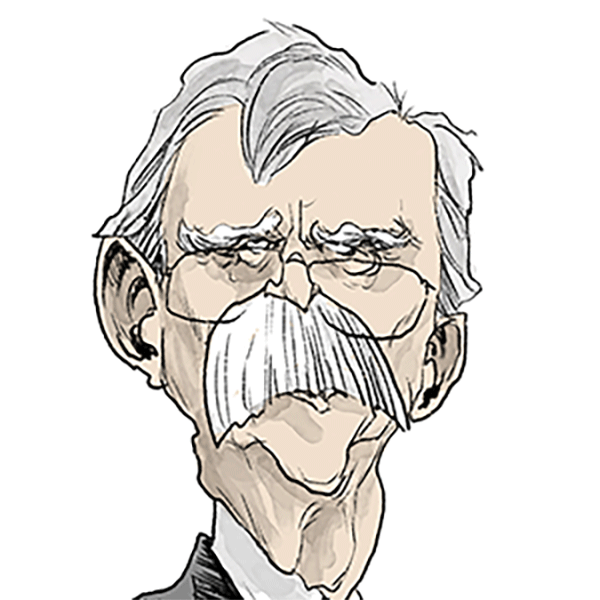Ukraine, European allies reject key parts of US-Russia plan
Published in News & Features
Kyiv’s biggest European allies lined up with President Volodymyr Zelenskyy to reject key elements of a U.S.-Russian plan to end the war in Ukraine as Washington threatened to halt military support to force acceptance of the deal.
German Chancellor Friedrich Merz, France’s Emmanuel Macron and Keir Starmer of the U.K. agreed on a call with Zelenskyy on Friday that Ukraine’s armed forces must remain capable of defending its sovereignty and that the current line of contact should be the starting point for any peace talks, according to a statement from the German government.
The U.S. has threatened to stop intelligence-sharing and weapons supplies to Ukraine and to pull out of all processes unless Kyiv agrees to the peace plan, according to people familiar with the matter. The White House didn’t immediately respond to a request for comment. Reuters was first to report the threat.
Merz convened the call to formulate a response to a 28-point list of demands and proposals that Zelenskyy received from the U.S. that would mean sweeping concessions to Vladimir Putin. The Ukrainian regions of Crimea, Luhansk and Donetsk would be “recognized as de facto Russian, including by the United States,” according to the plan, a copy of which was seen by Bloomberg News. Ukraine would also be required to hold elections in 100 days, give up any hope of NATO membership and slash the size of its armed forces.
“We are working on the document prepared by the American side. This must be a plan that ensures a real and dignified peace,” Zelenskyy posted on X after the call. “We are coordinating closely to make sure that the principled stances are taken into account.”
While the U.S. and Russia have largely sidelined European countries in their push to end the war, Europe’s response to their proposal is critical in shaping Ukraine’s next move. The European Union has been struggling to agree on a mechanism that would unlock about €140 billion ($160 billion) to sustain the Ukrainian war effort as the U.S. dials back its support for Kyiv.
European leaders will now meet on the sidelines of the Group of 20 conference in South Africa on Saturday to map out the next steps, according to a person familiar with matter. Finnish President Alexander Stubb, who’s earned the reputation of having the ear of Donald Trump, is also expected to join, according to a person briefed on the plans, who asked not to named because the talks are private.
There are doubts among European leaders about the status and legitimacy of the plan that would force Kyiv to cede large chunks of territory taken by Russia, cap the size of its military and lift sanctions on Moscow over time, one official said. They also characterized it as tantamount to a capitulation by Ukraine with Russia getting what it wants, the official added, requesting anonymity to talk freely on the matter.
European leaders have also been trying, and so far failed, to arrange a call with the U.S. to discuss the initiative, another person said.
Zelenskyy said on Thursday he’s agreed to work on the plan and expects to discuss details with Trump in the coming days.
The plan appears to maximise the potential for future Russian hybrid and false-flag operations that would see Moscow claim Ukraine breached the terms and then re-invade, a senior European official said. The official added that it very closely resembled Russia’s demands at previous talks and was completely unacceptable to Europe and Ukraine.
“It’s about a just and lasting peace, and we consider elements of this plan to be effective towards this goal,” German government spokesman Stefan Kornelius told reporters in Berlin on Friday. “We want to participate constructively in guiding this into a dynamic that will bring us closer to our goal of a lasting peace in Ukraine.”
Many details of the plan are proposals that have been vehemently rejected by Ukraine and its allies in the past. NATO member states may also object, given that the plan would curtail the defense alliance’s ability to admit new applicants as it sees fit. Such a move would need the buy-in of all 32 of its members.
The plan entails Ukraine receiving a U.S. security guarantee — albeit one that Washington would be compensated for. The U.S. would also get 50% of profits to rebuild and invest in Ukraine, and enter an economic partnership with Russia once sanctions are lifted.
Trump’s national security team has engaged with both Russian and Ukrainian officials and the president supports the current plan, White House Press Secretary Karoline Leavitt told reporters on Thursday.
While White House officials said the plan had Trump’s backing, one person familiar with the matter, who asked not to be identified discussing private deliberations, said conversations remain fluid. A delegation of top U.S. military officials, led by Army Secretary Dan Driscoll, was in Kyiv this week discussing avenues for progress, and options include ramping up military support, the person said.
The latest proposal was worked out between Trump’s envoy Steve Witkoff and Putin’s representative Kirill Dmitriev, according to people familiar with the matter. It follows past Witkoff efforts that Ukraine has been wary of and faced almost immediate opposition from Europe.
But the scale of the concessions to Moscow — as well as the U.S. — is massive, and would need buy-in from other countries not involved in the latest discussions.
Ukraine would not only have to promise not to join NATO, but would have to enshrine such a vow in its constitution. Russia would be brought back into the Group of Eight nations, a symbolic move that would end its international isolation and is opposed by other members of the group.
-------
—With assistance from Natalia Drozdiak, Aliaksandr Kudrytski, Alex Wickham, Alberto Nardelli, Daryna Krasnolutska, Michael Nienaber and Hadriana Lowenkron.
©2025 Bloomberg L.P. Visit bloomberg.com. Distributed by Tribune Content Agency, LLC.







Comments